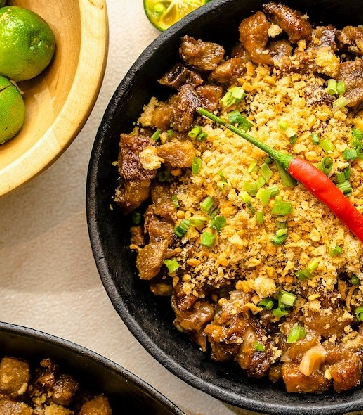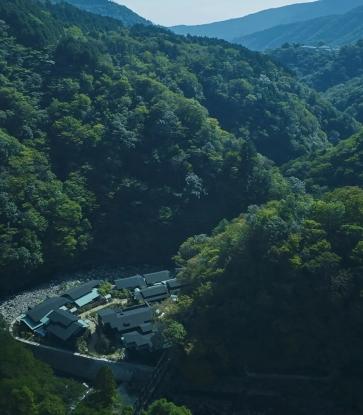
Feeldog, whose given name is Gwang-seok Oh, is a versatile artist from Busan who has made a name for himself across dance, music, and visual arts, building a distinctive creative world along the way. At the heart of his work lies Busan, a city that has shaped not only his artistic sensibilities but also his life’s direction. “Busan has always been a warm city for me. With the sea close by, it’s got an openness and freedom I haven’t found elsewhere. I still feel a deep nostalgia for it, and yes, I take a bit of ‘Busan pride’ with me,” he recalls fondly. “It’s truly home for me—a place where I can rest.”
Growing up in Busan until he was 20, Feeldog learned the fundamentals of art and flourished in a creative environment.
Even after moving to Seoul to pursue a range of artistic endeavors, the roots of his inspiration remained firmly planted in Busan. Watching his father craft trophies in his childhood fostered his creativity and curiosity, eventually guiding him toward a path as a painter. The nature of Busan—the sea, the wind, and the vivid memories of youth—continues to pulse through his artwork today.
“As I approach the age my father was when he had me, I often find myself reflecting on the different forms of love my parents showed me. Someday, I too will become a parent, and I wonder how I might express that love. Looking back, the memories are filled only with warmth and joy. Every time I return to Busan, the places where I spent time with my family as a child feel even more special.”
Rooted in the profound inspiration of his hometown, Feeldog’s artistic journey intertwines past and present as he continues to expand his unique creative world. Last year, he held his first solo exhibition in Busan, themed ‘Home,’ marking his debut in the city after many exhibitions in other locations. Beyond Korea, he has exhibited internationally and plans to continue infusing the essence of Busan into new works that transcend borders.

The first place I'd like to recommend is Hapcheon Gukbapjip, a Bib Gourmand I often visited in Yongho-dong. I stumbled upon it while heading toward Yongho-dong from Daeyeon Station, turned out to be a delightful find. With my parents hailing from Geochang, the name Hapcheon felt even more familiar and welcoming.
Many of Busan’s gukbap spots boast excellent flavors. Initially, I planned to suggest the well-known Ssangdungi(twin) Dwaeji-gukbap, but since it's already popular with tourists, I wanted to share the lesser-known Hapcheon Gukbapjip that holds a special place in my memory. Personally, while it might be a placebo effect, I feel that all gukbap in Busan has a unique charm. My preference is naejang gukbap (offal soup), as I’m not fond of sundae (Korean blood sausage), so I always look for options with plenty of offal.
At Hapcheon Gukbapjip, I recommend requesting a touch of soy sauce mixed with wasabi—similar to the sauce for boiled pork slices. Dipping the offal into this sauce is a real treat. I also enjoy adding rice to the soup once it cools slightly, savoring it with a quick slurp. I prefer a simpler texture, so my style is to eat the offal and meat first, then mix in rice with kimchi as the broth cools. This way, you can truly appreciate the full flavor of gukbap.


A popular recommendation among many, and for good reason, is the classic bao at Bao Haus. While I don’t usually eat a lot, this bao is just the right size to satisfy without overfilling. It’s slightly smaller than the palm of your hand, making it perfect for a quick, tasty bite.


UN Memorial Park

The UN Memorial Park near my childhood home was a nostalgic place where my friends and I could spend joyful hours without spending a penny. There’s a solemnity in the park due to the graves of war veterans, but it also has a vast lawn that’s ideal for a stroll. I still remember watching an outdoor movie there for the first time—Bicentennial Man.
The park’s beautiful greenery and its role in honoring veterans add to its tranquil appeal. It’s equipped with trails and grassy areas open to the public, so it became a frequent hangout with friends and family. Especially on sunny days, I remember spending hours walking and chatting with friends. Sitting on the museum-side steps at the back of the park, we even had a view of the fireworks festival held at Gwangalli Beach, creating some unforgettable memories.
Bosudong Bookstore Alley

My maternal grandparents lived near Bosudong, and with two older cousins, an older brother, and another cousin around, I visited often. My aunt was an incredible cook, and I remember roller-skating from Daeyeon Station to Bosudong alone as an elementary schooler, just to see her and my cousins. Even though it was quite a long distance away.
Back then, I often skated through Bosudong bookstore alley on my way to my grandparents, where the scent of old books filled the air. Today, Bosudong has a slightly hipper vibe, yet the distinct atmosphere of traditional bookstores remains, which I still appreciate. I enjoy wandering the backstreets and savoring the unique charm each alley offers—a nostalgic escape filled with the smell of aging pages.
Milmyeon

When you visit Busan, make sure to try milmyeon (cold wheat noodles) – it’s a must. Personally, I highly recommend mul milmyeon, the cold broth version, which pairs wonderfully with the warm, savory broth served at every milmyeon restaurant. While some like to order dumplings on the side, I prefer to keep it simple and enjoy just the noodles.

When I’m in Busan, I usually stay in Gijang, where my family lives, but I often head to Haeundae for dining. SIGNIEL Busan, with its towering presence in Haeundae, has become an iconic landmark. Last year, I entered the SIGNIEL Busan for the first time to attend an exhibition, and I still vividly remember being amazed once again by its grand atmosphere. Especially when looking up from the ground, the sheer scale of it really hits you.
The sheer scale and architectural elegance of SIGNIEL Busan make it unforgettable, standing tall as a symbol of Busan.
















